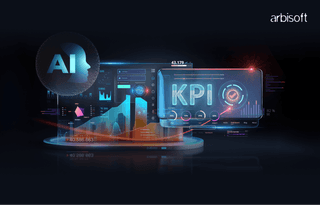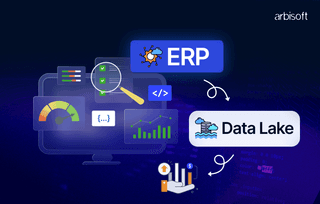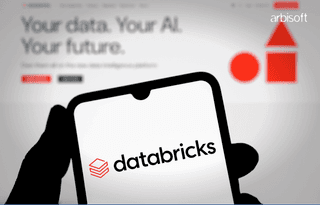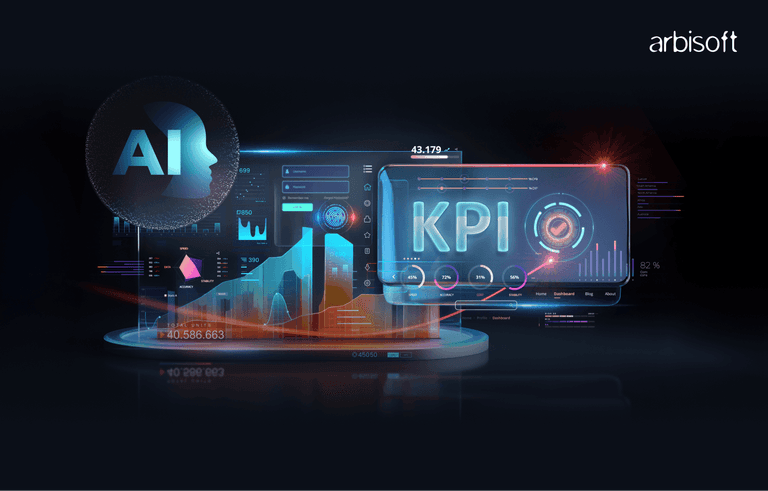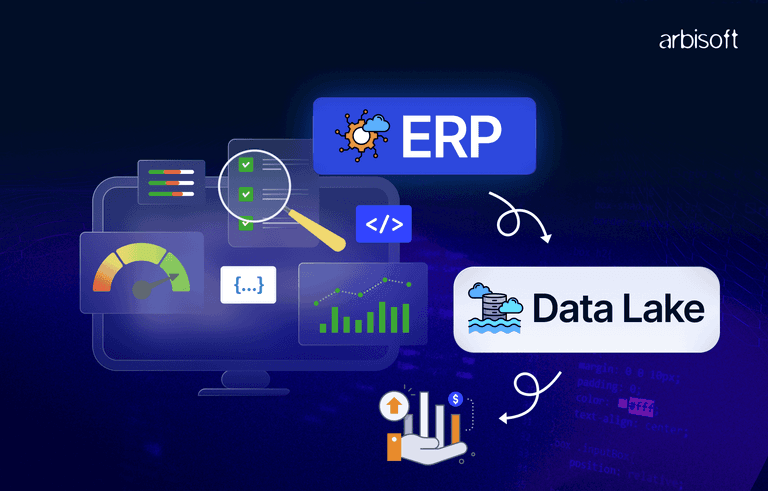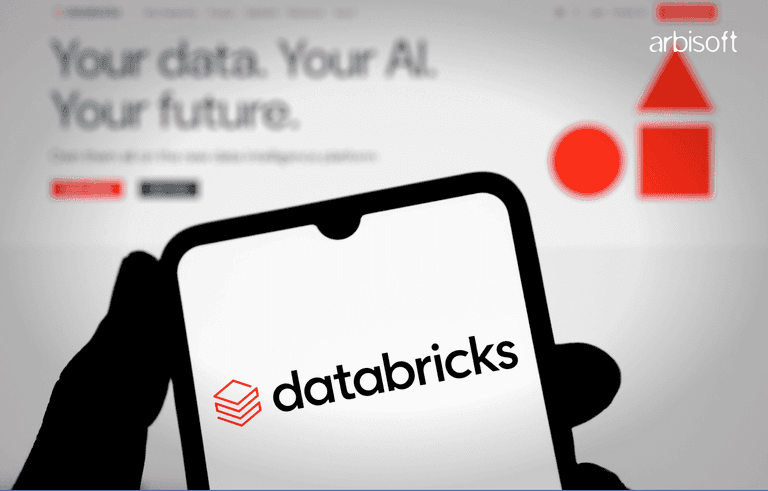We put excellence, value and quality above all - and it shows




A Technology Partnership That Goes Beyond Code

“Arbisoft has been my most trusted technology partner for now over 15 years. Arbisoft has very unique methods of recruiting and training, and the results demonstrate that. They have great teams, great positive attitudes and great communication.”
Navigating the Digital Frontier: Emerging Technologies in Digital Transformation

In today's rapidly evolving business landscape, staying ahead of the curve is essential for organizations aiming to remain competitive and relevant. Digital transformation (DT) has become the driving force behind this change, empowering businesses to streamline operations, enhance customer experiences, and unlock new growth opportunities.
As we make our way deeper into the digital age, a host of emerging technologies is destined to reshape the DT landscape. While we explore the reasons Why We Need a Digital Transformation Partner, here we will talk about some of the most impactful emerging technologies that are driving the next phase of digital transformation.
Emerging Technologies in Digital Transformation
Without any further delay, let us dive in.
Environmental Sustainability Empowered by IoT
The promising intersection of environmental sustainability and the Internet of Things (IoT) marks a pivotal emerging trend in digital transformation. IoT technologies are increasingly applied to monitor and manage environmental factors, from air and water quality to energy consumption.
By deploying IoT sensors and devices, organizations gain real-time insights into the environmental impact, allowing for more informed decisions and sustainable practices. This trend not only promotes resource efficiency but also aligns businesses with the global commitment to eco-friendliness, making it a critical aspect of contemporary digital transformation efforts.
Creating Sustainability: Real-world Application
Imagine a smart city project aiming to reduce energy consumption and carbon emissions. By deploying IoT sensors throughout the city, in streetlights, buildings, and transportation systems, real-time data on energy usage, traffic patterns, and air quality can be continuously collected. This data may then be analyzed using advanced analytics and artificial intelligence to optimize energy distribution, traffic flow, and pollution control.
For instance, when the IoT sensors detect lower traffic volumes in a certain area during off-peak hours, streetlights automatically dim to conserve energy. Similarly, public transportation routes can be adjusted in real-time based on passenger demand and traffic conditions, reducing fuel consumption and emissions. Furthermore, air quality monitoring through IoT can trigger alerts and actions to mitigate pollution during adverse conditions.
AI will continue to make headlines
The ongoing advancements in artificial intelligence, supported by ai and data science services, are transforming industries across the board. From predictive analytics that enhances decision-making to AI-powered chatbots providing seamless customer support - the applications are extensive and evolving. The integration of AI into various sectors, such as healthcare, finance, and manufacturing is enabling organizations to automate processes, gain deeper insights from data, and innovate in ways previously thought impossible.
AI's emergence as a digital transformation trend is evident in its growing impact on businesses. The trend extends beyond just automating tasks to enabling machine learning models that can adapt and improve over time. This adaptability and versatility make AI a central pillar in digital transformation efforts across industries. The ability to harness AI's potential for improved efficiency, personalization, and innovation will be key for organizations looking to remain competitive in the digital age.
Transforming Industries with AI: Real-world Application
Consider a healthcare institution that has implemented AI-driven predictive analytics. By analyzing vast patient data, including medical records, diagnostic tests, and even social determinants of health, AI algorithms can identify patterns and predict disease risks more accurately than traditional methods. This enables healthcare providers to proactively intervene with preventive care measures for high-risk patients, ultimately improving patient outcomes and reducing healthcare costs.
Multiprotocol IoT connectivity
In the landscape of emerging digital transformation trends, the adoption of multiprotocol IoT connectivity is gaining significant traction. This trend involves the development and implementation of standardized solutions that bridge the gap between different IoT communication protocols, enabling devices to interact and share data effortlessly. With the emergence of IoT devices across industries, the need for seamless communication between devices using various protocols has become paramount.
As a result, organizations can create more interconnected and efficient IoT ecosystems, unlocking new opportunities for automation, data-driven insights, and improved operational efficiency. This trend is not only fostering innovation but also promoting interoperability in the increasingly interconnected world of IoT.
Catalyzing Efficiency with IoT: Real-world Applications
Imagine a smart manufacturing facility that employs a diverse range of IoT devices, each designed to monitor and control different aspects of the production process. These devices may use various communication protocols, such as Zigbee, Bluetooth, and MQTT. In the past, integrating and coordinating data from these devices was complex and time-consuming due to protocol mismatches.
However, with the adoption of multiprotocol IoT connectivity standards, these devices can now seamlessly communicate with each other and a central control system. For instance, a temperature sensor using Zigbee can easily transmit data to a quality control system that uses MQTT, ensuring that temperature deviations are quickly detected and addressed. This level of interoperability streamlines operations, reduces downtime, and enhances overall efficiency in the manufacturing process.
As multiprotocol IoT connectivity becomes standard, it simplifies the deployment and management of IoT solutions in various industries, from manufacturing and logistics to healthcare and agriculture. This, in turn, fosters a more connected and data-driven digital transformation landscape.
AI Hardware
As AI algorithms and models become increasingly sophisticated, the demand for specialized hardware to support their computation and acceleration is on the rise.
This trend involves the development of AI-specific hardware components, such as graphic processing units (GPUs), application-specific integrated circuits (ASICs), and neural processing units (NPUs), designed to handle the complex calculations required for AI tasks. These AI hardware solutions not only boost the speed and efficiency of AI workloads but also reduce energy consumption, making AI more accessible and cost-effective. They play a pivotal role in enabling organizations to deploy AI solutions at scale, from advanced data analytics to machine learning applications.
AI Hardware Accelerating Digital Transformation
Consider a healthcare organization aiming to improve patient care through AI-driven medical imaging analysis. In the past, processing and analyzing the vast amount of medical imaging data (such as MRI or CT scans) for accurate diagnosis and early detection of diseases was a resource-intensive and time-consuming task.
However, with the adoption of AI hardware, particularly specialized GPUs and ASICs designed for image recognition and analysis, healthcare providers can dramatically accelerate this process. These AI hardware components allow for real-time processing of medical images, enabling the rapid identification of anomalies, early disease detection, and quicker treatment decisions. As a result, patient outcomes are improved, and healthcare providers can serve more patients efficiently.
Enriching Data Streams In Manufacturing
In an era where data is hailed as the new currency, manufacturers are recognizing the value of not only collecting vast amounts of data from sensors and machines but also enriching that data with context and insights.
According to Omdia’s software market for Robotic Process Automation and Intelligent Automation, manufacturing is exhibiting the highest growth rate, forecasted at 39% CAGR 2020-27.
By incorporating advanced analytics, machine learning solutions, and AI into their operations, manufacturers can extract actionable information from raw data streams, often leveraging business intelligence solutions to drive insights. This empowers them to optimize production processes, improve quality control, and predict maintenance needs, leading to increased efficiency and reduced downtime. The trend of enriching data streams underscores the evolving role of data as a strategic asset in driving transformative changes within the manufacturing sector.
Transforming Manufacturing: Real-world Applications
In today's contemporary automobile manufacturing plant, an extensive network of sensors is employed to monitor the production line meticulously. These sensors collect data on everything from the temperature of welding equipment to the torque applied during assembly. In the past, this data may have been collected but not fully utilized.
With the emerging trend of enriching data streams, manufacturers can now apply advanced analytics and AI to this data in real-time. For instance, if the data analytics system detects a deviation in the welding temperature, it immediately triggers adjustments to maintain product quality, a process further enhanced by predictive analytics solutions. Similarly, by analyzing torque data, the system predicts when a machine is likely to require maintenance, scheduling it before a breakdown occurs.
This proactive approach not only improves product quality but also reduces unplanned downtime and maintenance costs, ultimately increasing production efficiency. By enriching data streams with context and insights, manufacturers can make more informed decisions, streamline their operations, and drive digital transformation within their industry.
Operationalizing AI
Operationalizing AI is a growing digital transformation trend that emphasizes the integration of artificial intelligence into day-to-day business operations. Rather than treating AI as a standalone initiative, organizations work to seamlessly embed AI capabilities across various functions.
This approach allows AI to become an integral part of decision-making processes, automating routine tasks, providing real-time insights, and enhancing overall efficiency. By operationalizing AI, businesses can leverage its power to create more agile and data-driven operations, drive innovation, and stay competitive in an increasingly AI-driven landscape. This trend highlights the shift from AI experimentation to practical implementation in a wide range of industries.
Operationalizing AI in Business Operations
When a financial institution embraces the trend of operationalizing AI, Instead of using AI only for specific tasks like fraud detection or customer service chatbots, the organization integrates AI into its core operations.
AI algorithms continuously analyze customer transaction data, identify patterns, and predict market trends in real-time. When a customer initiates a financial transaction, such as a stock trade, the AI system provides personalized investment recommendations based on the customer's financial goals and market conditions. Additionally, AI-driven risk management tools instantly assess the transaction's risk and compliance with regulations, ensuring that it meets all requirements.
By operationalizing AI in this way, the financial institution may not only improve customer service but also optimize its investment strategies and minimize risk. This results in better financial outcomes for both the institution and its customers. This trend showcases how businesses across industries are increasingly leveraging AI to enhance their core operations and make data-driven decisions, ultimately driving digital transformation.
Cloud and Intelligent Edge
Organizations are increasingly leveraging the capabilities of cloud infrastructure while extending their reach to the intelligent edge, which includes devices and sensors at the periphery of the network. This trend enables real-time data processing, analytics, and decision-making at the edge, reducing latency and bandwidth requirements. By seamlessly connecting cloud resources with edge devices, businesses can create more agile and responsive systems, supporting applications ranging from autonomous vehicles to IoT-enabled smart cities.
This trend reflects the growing importance of distributed computing in enhancing efficiency, innovation, and scalability across diverse industries.
The Fusion of Cloud and Intelligent Edge
Consider a logistics company that operates a fleet of delivery vehicles equipped with sensors and cameras for real-time monitoring. In the past, all the data from these vehicles was sent to a centralized cloud server for processing and analysis. This approach often introduced latency, making it challenging to respond quickly to critical events such as accidents or route deviations.
With the emerging trend of cloud and intelligent edge convergence, this logistics company now deploys edge computing devices within each vehicle. These edge devices have the capability to process data locally, such as analyzing camera feeds to detect road conditions or monitoring engine performance live. They can also make immediate decisions, such as rerouting a delivery vehicle in response to traffic congestion.
Meanwhile, data that requires long-term storage or deeper analysis is still sent to the central cloud server. By combining the power of cloud computing for comprehensive data analysis with the agility of intelligent edge devices for decision-making, the logistics company optimizes its operations. This results in more efficient route planning, reduced fuel consumption, and quicker responses to unforeseen events, ultimately enhancing customer satisfaction.
The Quantum Advantage
The Quantum Advantage is an emerging digital transformation trend that revolves around harnessing the power of quantum computing. Quantum computers leverage the principles of quantum mechanics to perform complex calculations at speeds unimaginable by classical computers.
This trend is set to revolutionize industries by tackling problems that were previously unsolvable due to their sheer complexity, such as optimizing supply chains, simulating molecular structures for drug discovery, and solving intricate mathematical equations. As quantum computing technology matures, businesses are exploring its potential to drive innovation and gain a competitive edge by addressing challenges that were once considered insurmountable, making it a prominent trend in the realm of digital transformation.
Quantum Computing in Pharmaceuticals
Traditional drug discovery processes in a pharmaceutical company involve extensive trial and error, with researchers testing thousands of chemical compounds to identify potential candidates. This process is not only time-consuming but also resource-intensive.
With the emergence of quantum computing, the pharmaceutical company can now simulate and analyze molecular structures with unprecedented speed and accuracy. Quantum computers can model the behavior of molecules and predict their interactions with other compounds, greatly accelerating the drug discovery process. Researchers can identify promising drug candidates, optimize their molecular structures, and predict potential side effects with remarkable precision.
By leveraging the quantum advantage, this pharmaceutical company not only reduces the time and cost associated with drug development but also brings innovation to the market more rapidly. This example illustrates how quantum computing is transforming industries by solving complex problems and unlocking new possibilities for innovation and efficiency, making it a prominent digital transformation trend.
In a Nutshell
These emerging digital transformation trends are reshaping industries and propelling us into a future where technology plays a central role in how we live and work. Organizations across the globe are embracing these trends to drive innovation, efficiency, and competitiveness.
The digital transformation journey is dynamic and ever-evolving, and those who adapt and harness the power of these trends will be at the forefront of the digital frontier. As we navigate this digital transformative landscape, one thing is certain: the future holds exciting possibilities for those willing to embrace these emerging technologies and the opportunities they bring.








